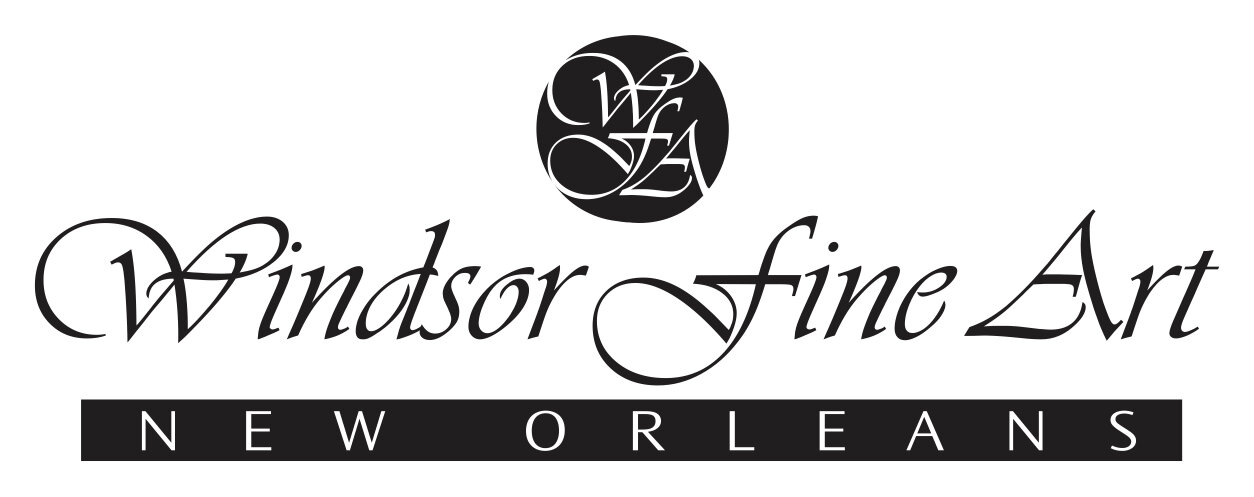Henri Matisse
French-born, 1869-1954
Along with Pablo Picasso, Henri Matisse was regarded as one of the greatest figures in 20th-century art, a master of color and form, and the leader of the group of artists known as the Fauves. Unlike many artists, he was internationally popular during his lifetime and enjoyed the favor of collectors, art critics, and the younger generation of artists who followed him.
In 1892, having given up a career in law, Matisse went to Paris to study art formally. His teachers were academically trained and relatively conservative in style, but Matisse also studied more contemporary art, especially that of the Impressionists. Matisse's true artistic liberation, in terms of using color to render forms and organize spatial planes, came through the influence Paul Gauguin, Paul Cezanne and Vincent van Gogh, whose work he studied closely beginning about 1899. Then, in 1903 and 1904, Matisse encountered the pointillist paintings of Henri Edmond Cross and Paul Signac. Cross and Signac were experimenting with juxtaposing small strokes (often dots or “points”) of pure pigment to create the strongest visual vibration of intense color. Matisse adopted their technique and modified them repeatedly, usually using broader strokes. He also embarked upon an exploration of printmaking, with an emphasis on linocuts, lithography and etching, that would propel his creativity into other media.
By 1905, Matisse had produced some of the boldest color images ever created, and exhibited his paintings along with works by Andre Derain and Maurice de Vlaminck. Together, the group was dubbed les fauves (literally, “the wild beasts”) because of the extreme emotionalism in which they seemed to have indulged, their use of vivid colors, and their distortion of shapes.
Although intellectually sophisticated, Matisse always emphasized the importance of instinct and intuition in the production of a work of art. He argued that an artist did not have complete control over color and form; instead, colors, shapes, and lines would come to dictate their own relation to one another. He often emphasized his joy in abandoning himself to the play of the forces of color and design.
"Creativity takes courage." - Henri Matisse

"L'Enterrement de Pierrot"
1947
Pochoir stencil print in colors on wove paper
16 1/2 x 25 3/4 in.

". . . On dirait qu'elle ne m'a jamais vue . . . "
1944
Original linocut printed in black ink on Rives wove paper
12.75 x 9.75 in.

"Odalisque Debout au Plateau de Fruits"
1924
Original lithograph
Hand-signed in pencil in the margin lower right Henri Matisse
Image Size: 14 13/16 x 10 7/8 in.
Sheet Size: 18 13/16 x 12 7/8 in.

"La Robe Jaune au Ruban Noir"
1922
Original lithograph
Hand-signed in pen & ink lower right Henri Matisse
Image Size: 15 9/16 x 11 5/16 in.
Sheet Size: 21 3/8 x 14 in.

"Et se Coucher Chaque Soir Dans son Malheur (p. 75; variant II)"
1944
Original linocut printed in black ink on Rives wove paper
Bearing the artist's estate monogram blindstamp in the paper lower right
Image Size: 9 5/8 x 7 1/16 in.
Sheet Size: 12 3/4 x 9 3/4 in.

"À la Mémoire de Angèle Lamotte"
1945
Original transfer lithograph from the artist's drawing printed in black ink on wove paper
13 5/8 x 10 1/8 in.

"Dors, Dormeuse aux Longs Cils (Variant IV)"
1944
Original linocut printed in black ink on white Rives wove paper
Bearing the artist's estate monogram blindstamp in the paper lower right
Image Size: 9 5/8 x 7 1/16 in.
Sheet Size: 12 3/4 x 9 3/4 in.

"Orientale à la croix trifoliée"
1929
Original lithograph
21 1/4 x 17 3/4 in.

"Nu assis, chevelure claire"
1922
Original lithograph
Hand-signed in ink lower left
15 3/8 x 9 ¼ in.

"La Nageuse dans l’Aquarium"
1947
Pochoir stencil print in colors on wove paper
16 5/8 x 25 5/8 in.

"Le Tobogon"
1947
Pochoir stencil print in colors on wove paper
Image Size: 13 x 11 3/4 inches
Sheet Size: 25 11/16 x 16 5/8 in.

"Etude Pour La Vierge "Tête Voilée"
1950-51
Original lithograph
Hand signed in pencil in the margin lower right
Image Size: 10 13/16 x 7 5/8 in.
Sheet Size: 19 5/8 x 14 5/8 in.

". . . Et il faudra mourir sans avoir tué le vent . . ."
1944
Original linocut printed in black ink on white Rives wove paper
12.75 x 9.75 in

